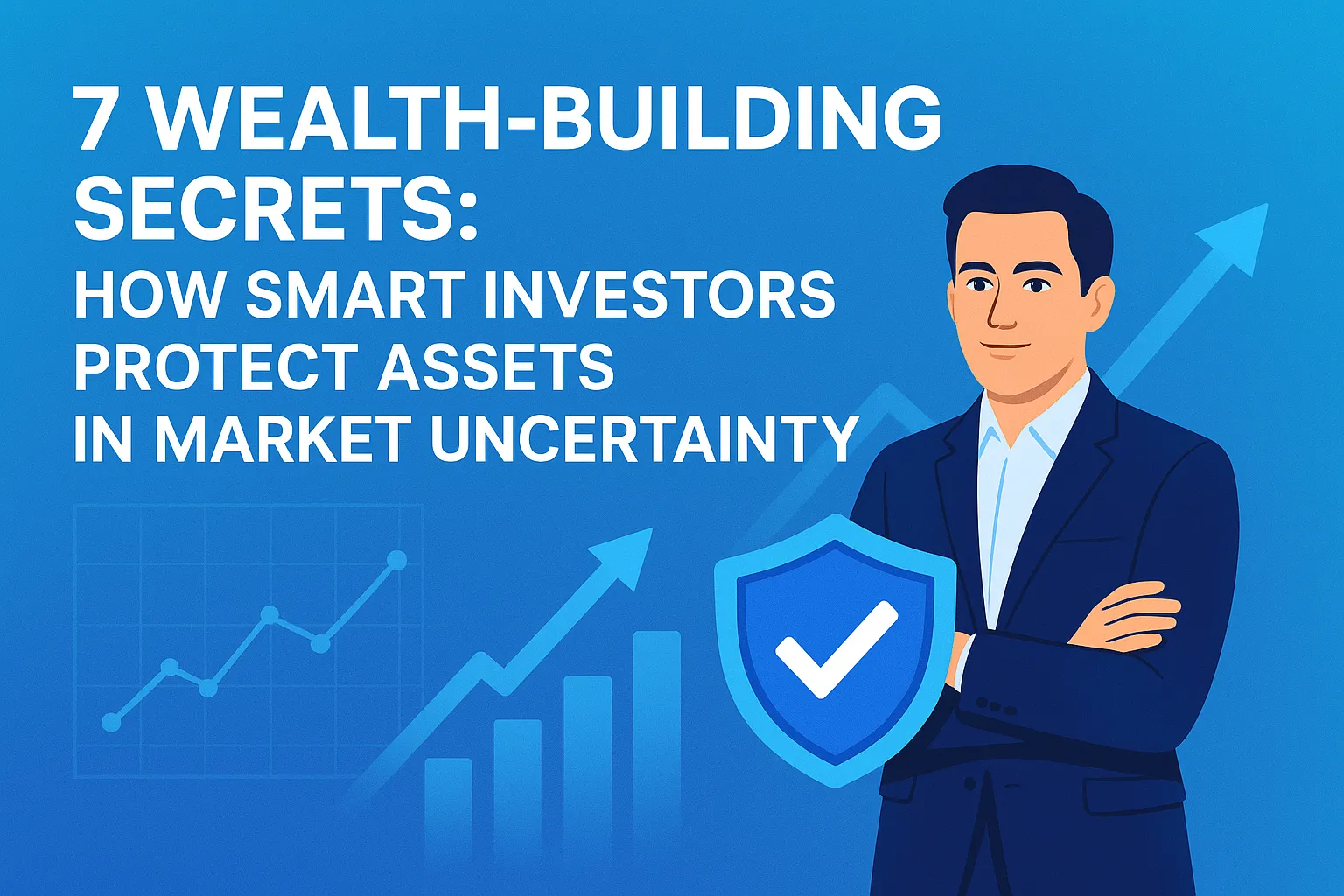7 Wealth-Building Secrets: How Smart Investors Protect Assets in Market Uncertainty

Market uncertainty can be a real head-scratcher, right? You’re sitting there with your coffee, wondering if your investments are safe or if they're about to tank. Ever felt that knot in your stomach when you hear about a stock market crash on the news? Yeah, me too. But here's the thing—smart investors have some tricks up their sleeves. And today, I'm spilling the beans on their secrets.
1. Diversification: The Classic Safety Net
Think of diversification like a good old-fashioned fruit salad. You wouldn't just toss in only apples, would you? Nah, you'd mix it up with some bananas, berries, maybe even a few grapes. It's the same with investments. By spreading your money across different assets, you reduce the risk of losing everything if one market goes sour.
- Stocks: The juicy apples of your portfolio.
- Bonds: Think of them as the reliable bananas.
- Real Estate: Those are your hearty grapes.
- Commodities: The exotic berries that spice things up.
See? It's like a delicious financial smoothie. So, why not give it a whirl?
2. Emergency Fund: Your Financial Umbrella
Ever been caught in a downpour without an umbrella? It’s not fun. An emergency fund is your financial umbrella. It keeps you dry when the financial storms hit. Aim for three to six months’ worth of living expenses. It’s the cushion that lets you sleep at night, knowing you’re covered if things get bumpy.
3. Stay Informed: Knowledge is Power
Let’s be real—keeping up with the market feels like trying to drink from a firehose. But staying informed is crucial. Subscribe to reliable financial news, follow market trends, and keep your ear to the ground. You don’t have to be a finance guru, but knowing the basics helps you make informed decisions.
4. Rebalancing: Keeping Your Portfolio in Check
Imagine your investments are like a garden. Without regular care, weeds can take over. Rebalancing is your way of pulling those weeds. It’s about adjusting your portfolio to maintain your desired level of risk. Maybe you started with 60% stocks and 40% bonds, but now it's shifted. Time to rebalance and get back on track.
5. Risk Management: Know Your Limits
No one likes to think about losing money, but it’s part of the game. Smart investors understand their risk tolerance. It’s like knowing how spicy you like your food. Some can handle the heat, others not so much. Know your limits and invest accordingly. Don’t bite off more than you can chew.
6. Long-Term Perspective: Patience is a Virtue
Investing isn’t a sprint; it’s a marathon. The market will have ups and downs, but history shows it tends to rise over the long run. Patience pays off. So, sit back, relax, and let your investments do their thing. Remember, good things come to those who wait.
7. Seek Professional Advice: Sometimes You Need a Guide
Even the best of us need a little help sometimes. Financial advisors are like the GPS for your financial journey. They can help you navigate tricky waters and keep you on course. If you’re unsure, don’t hesitate to reach out for professional advice. It’s better than trying to figure it out all on your own.
FAQs
1. How often should I rebalance my portfolio?
Generally, once a year is a good rule of thumb. But if there are significant changes in the market or your financial situation, you might want to do it more often.
2. What’s the best way to start diversifying my investments?
Start by assessing your risk tolerance and investment goals. Then, consider spreading your money across different asset classes like stocks, bonds, and real estate.
3. How much should I have in my emergency fund?
Aim for three to six months’ worth of living expenses. This provides a cushion for unexpected expenses or financial setbacks.
Now that you’ve got these wealth-building secrets in your pocket, why not start applying them today?



